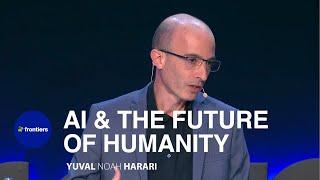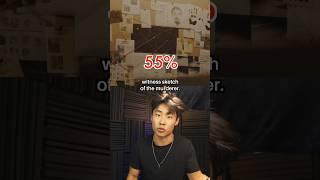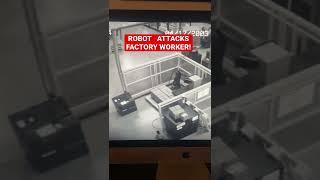????We Have A Patreon!????
https://patreon.com/didyoucatchthis
The 2001 film "A.I. Artificial Intelligence," directed by Steven Spielberg, is renowned not only for its storytelling and special effects but also for its meticulous wardrobe and set design. The film's visual aesthetic is a testament to the detailed work of costume designer Bob Ringwood and production designer Rick Carter. Their collaboration created a believable and immersive futuristic world that reflected the film's themes of artificiality and humanity. The wardrobe and set design played crucial roles in defining the characters and the environments they inhabited, adding depth and texture to the narrative.
The wardrobe in "A.I. Artificial Intelligence" was crafted to distinguish between humans and robots while highlighting the film's futuristic setting. Bob Ringwood's costume designs for the human characters were subtle and practical, often featuring muted tones and contemporary styles to ground the story in reality. In contrast, the robotic characters, such as David and Gigolo Joe, were dressed in more stylized and elaborate outfits. Gigolo Joe's sleek, metallic suit, for instance, emphasized his role as a pleasure robot and reflected his artificial nature. David's simple, yet slightly anachronistic clothing underscored his innocence and desire to be accepted as a real boy. These costume choices effectively conveyed the characters' identities and the societal divisions between humans and robots.
Set design was equally pivotal in bringing the world of "A.I. Artificial Intelligence" to life. Rick Carter's production design encompassed a wide range of environments, from the sterile, clinical spaces of the robotic research facilities to the vibrant, neon-lit streets of Rouge City. Each set was meticulously crafted to enhance the story's futuristic yet emotionally resonant atmosphere. The use of advanced materials, innovative architectural designs, and intricate details created a visually rich landscape that felt both familiar and otherworldly. The juxtaposition of cold, industrial settings with more colorful and chaotic urban environments highlighted the film's exploration of technological advancement and its impact on society. Together, the wardrobe and set design in "A.I. Artificial Intelligence" contributed significantly to the film's lasting impact and visual legacy.
http://didyoucatchthis.com
https://www.tiktok.com/@didyoucatchthis
https://www.facebook.com/didyoucatchthis
https://www.instagram.com/didyoucatchthistv
https://www.snapchat.com/add/diducatchthis
A.I. Artificial Intelligence (2001) | Designing AI: Dressing AI | Behind The Scenes
https://youtu.be/Rxtcv4L5chQ
#behindthescene #behindthescenes #movies #2000s
https://patreon.com/didyoucatchthis
The 2001 film "A.I. Artificial Intelligence," directed by Steven Spielberg, is renowned not only for its storytelling and special effects but also for its meticulous wardrobe and set design. The film's visual aesthetic is a testament to the detailed work of costume designer Bob Ringwood and production designer Rick Carter. Their collaboration created a believable and immersive futuristic world that reflected the film's themes of artificiality and humanity. The wardrobe and set design played crucial roles in defining the characters and the environments they inhabited, adding depth and texture to the narrative.
The wardrobe in "A.I. Artificial Intelligence" was crafted to distinguish between humans and robots while highlighting the film's futuristic setting. Bob Ringwood's costume designs for the human characters were subtle and practical, often featuring muted tones and contemporary styles to ground the story in reality. In contrast, the robotic characters, such as David and Gigolo Joe, were dressed in more stylized and elaborate outfits. Gigolo Joe's sleek, metallic suit, for instance, emphasized his role as a pleasure robot and reflected his artificial nature. David's simple, yet slightly anachronistic clothing underscored his innocence and desire to be accepted as a real boy. These costume choices effectively conveyed the characters' identities and the societal divisions between humans and robots.
Set design was equally pivotal in bringing the world of "A.I. Artificial Intelligence" to life. Rick Carter's production design encompassed a wide range of environments, from the sterile, clinical spaces of the robotic research facilities to the vibrant, neon-lit streets of Rouge City. Each set was meticulously crafted to enhance the story's futuristic yet emotionally resonant atmosphere. The use of advanced materials, innovative architectural designs, and intricate details created a visually rich landscape that felt both familiar and otherworldly. The juxtaposition of cold, industrial settings with more colorful and chaotic urban environments highlighted the film's exploration of technological advancement and its impact on society. Together, the wardrobe and set design in "A.I. Artificial Intelligence" contributed significantly to the film's lasting impact and visual legacy.
http://didyoucatchthis.com
https://www.tiktok.com/@didyoucatchthis
https://www.facebook.com/didyoucatchthis
https://www.instagram.com/didyoucatchthistv
https://www.snapchat.com/add/diducatchthis
A.I. Artificial Intelligence (2001) | Designing AI: Dressing AI | Behind The Scenes
https://youtu.be/Rxtcv4L5chQ
#behindthescene #behindthescenes #movies #2000s
- Category
- Artificial Intelligence












Comments